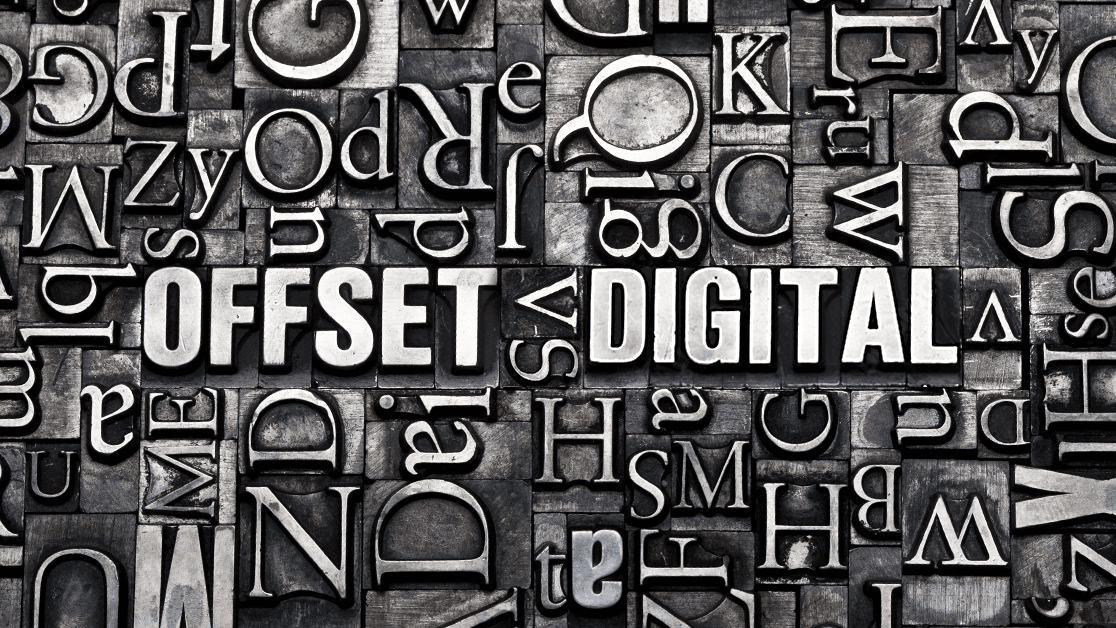Digital vs. Offset Printing: Understanding the Key Differences

In the printing world, there are two main technologies: digital printing and offset printing. They both turn digital pictures into physical prints, but they use different methods to do it. Each has its own good points and uses. Knowing what makes them different helps decide which one to use for different projects. Factors like cost, quality, quantity and practical aspects should be considered when picking which method to go with.
Digital Printing
Digital printing is a modern printing method that directly transfers digital files onto various substrates such as paper, cardstock, vinyl, and more. It operates on the principle of sending digital files directly to the printing press, eliminating the need for traditional printing plates used in offset printing. The key components of digital printing include high-speed inkjet and toner digital printing presses.
Key Features of Digital Printing
1. Variable Data Printing: Digital printing excels in variable data printing, allowing for customization of each printed piece. This is particularly useful in projects requiring personalized content, such as book numbering, direct mail campaigns, invitations, and promotional materials.
2. Short Print Runs: Digital printing is cost-effective for short print runs since it does not require setup costs associated with plate-making in offset printing. This makes it ideal for small businesses, startups, or individuals looking to print limited quantities of materials without excessive expenses.
3. Quick Turnaround Times: With minimal setup requirements and no need for drying time, digital printing offers faster turnaround times compared to offset printing. This makes it suitable for projects with tight deadlines or last-minute changes.
4. High-Quality Output: Advancements in digital printing technology have significantly improved print quality, making it comparable to offset printing for many applications. Digital printers can produce sharp text, vibrant colors, and intricate details, meeting the demands of various printing projects.
Offset Printing
Offset printing is a traditional printing method that involves transferring ink from a plate to a rubber blanket and then onto the printing surface. It relies on the principle of oil and water repulsion, where the image areas attract ink and repel water while non-image areas attract water and repel ink. Offset printing presses consist of several cylinders that apply ink and pressure to create the final printed product.
Key Features of Offset Printing
1. High-Quality Color Reproduction: Offset printing is renowned for its exceptional color accuracy and consistency, making it the preferred choice for projects requiring precise color matching, such as high-end publications.
2. Cost-Effectiveness for Large Print Runs: While offset printing involves higher setup costs due to plate-making and press setup, it becomes more cost-effective for large print runs. The per-unit cost decreases as the quantity increases, making it an economical choice for bulk printing projects.
3. Extensive variety of printing surfaces: Offset printing can handle lots of different surfaces for printing. It works with various paper sizes, even big ones up to B0, different thicknesses, and finishes. Plus, with offset printing, the printed paper can be subjected to enhancement, which means adding gloss to it, as well as increasing its durability.
4. Access to Pantone colours: Offset printing can easily reproduce Pantone colors by using specific ink formulas that match the desired shades precisely. Printers typically have Pantone color guides or swatch books to reference when mixing inks to achieve the exact color required for a particular project. This ensures accurate color representation and consistency across different print jobs.
Key Differences Between Digital and Offset Printing
1. Setup Requirements: Digital printing has minimal setup requirements since it does not involve plate-making or press setup, making it suitable for short print runs and quick turnaround times. In contrast, offset printing requires upfront setup costs but becomes cost-effective for large print runs.
2. Color Accuracy: While both methods can achieve high-quality color reproduction, offset printing typically offers superior color accuracy and consistency, making it the preferred choice for projects where color precision is paramount.
3. Customization and Personalization: Digital printing excels in variable data printing and customization, allowing for personalized content on each printed piece. This makes it ideal for targeted marketing campaigns and personalized communication.
In conclusion, both digital and offset printing methods have their unique strengths and applications. Choosing the right method depends on factors such as print quantity, budget, turnaround time and color accuracy. By understanding the differences between these two printing techniques, businesses and individuals can make informed decisions to achieve their desired printing outcomes efficiently and effectively.